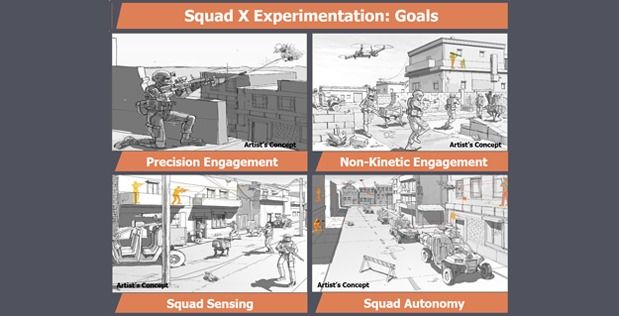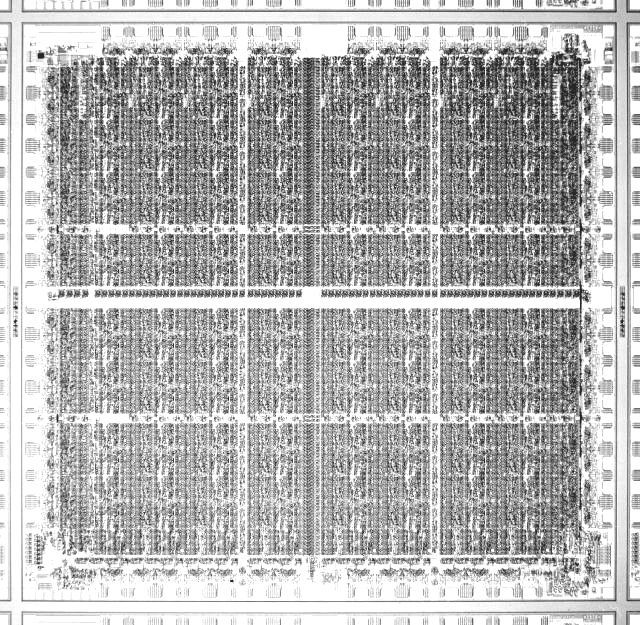“Modern life relies on satellite sytems but they are alarmingly vulnerable to attack as they orbit the Earth. Patricia Lewis explains why defending them from hostile forces is now a primary concern for states”
“Through Squad X, we want to vastly improve dismounted squad effectiveness in all domains by integrating new and existing technologies into systems that squads can bring with them,” said Maj. Christopher Orlowski, DARPA program manager. “The squad is the formation with the greatest potential for impact and innovation, while having the lowest barrier to entry for experimentation and system development. The lessons we learn and the technology we create could not only transform dismounted squads’ capabilities, but also eventually help all warfighters more intuitively understand and control their complex mission environments.”
Squad X intends to combine off-the-shelf technologies and new capabilities under development through DARPA’s Squad X Core Technologies (SXCT) program, which was launched specifically to develop novel technologies that Squad X could integrate into user-friendly systems. SXCT shares Squad X’s overarching goal of ensuring that Soldiers and Marines maintain uncontested tactical superiority over potential adversaries by exploring capabilities in four areas: precision engagement, non-kinetic engagement, squad sensing and squad autonomy. In an important step toward that goal, SXCT recently awarded Phase 1 contracts to nine organizations.
The U.S. Army, U.S. Navy and U.S. Marine Corps have expressed interest in future Squad X capabilities and plan to support the experimentation efforts with testing in simulated operational environments as the program progresses.
For those who read here often, there are clear signs that the FPGA is set to become a compelling acceleration story over the next few years.
From the relatively recent Intel acquisition of Altera by chip giant Intel, to less talked-about advancements on the programming front (OpenCL progress, advancements in both hardware and software from FPGA competitor to Intel/Altera, Xilinx) and of course, consistent competition for the compute acceleration market from GPUs, which dominate the coprocessor market for now.
Last week at the Open Compute Summit we finally got a glimpse of one of the many ways FPGAs might fit into the hyperscale ecosystem (along with other future hardware insight) with an announcement that Intel will be working on future OCP designs featuring an integrated FPGA and Xeon chip. Unlike what many expected, the CPU mate will not be a Xeon D, but rather a proper Broadwell EP. As seen below, this appears to be a 15-core part (Intel did not confirm, but their diagram makes counting rather easy) matched with the Altera Arria 10 GX FPGAs.
Stephen Wolfram, the inventor of the mathematical programming system Wolfram Language, thinks there might be intelligent life, of a sort, in the digits of pi. He spoke recently at the SETI Institute about what his “principle of computational equivalence” means for non-human intelligence — check out the heady hour-and-a-half lecture below.
The key thread running through his concept is that simple rules underpin complex behavior. For Wolfram, the pigmentation patterns on a mollusk shell, for example, aren’t necessarily the outcome of deliberate evolutionary forces. “I think the mollusk is going out into the computational universe, finding a random program, and running it and printing it on its shell,” Wolfram says in the lecture. “If I’m right, the universe is just like an elaborate version of the digits of pi.” (There is some debate, of course, over just how right Wolfram is — though you won’t really get that from the lecture.)
To show how this simplicity-begetting complexity relates to aliens, Wolfram draws from the end of Carl Sagan’s Contact). Spoilers (for a book): after communicating with the alien intelligence, astronomer Ellie Arroway finds in the digits of pi an image of a circle. She takes it as a sign of intelligence baked into the universe. Because the digits are both random and infinite, this also means that within pi “combinatorially there exists the works of Shakespeare and any possible picture of any possible circle,” Wolfram says.
Movies & TV
Posted in entertainment, media & arts, mobile phones
Rethinking of cytotoxic/immunosuppressive chemotherapy mixing with immune-based therapeutics.
Investors’ Soapbox PM
Cancer therapy may see major shift.
There’s evidence cytotoxic/immunosuppressive chemotherapy can be combined with immune-based therapeutics.
A new study suggests environmental interventions do increase intelligence — but the effects are temporary.
In the investigation, University of California, Santa Barbara, psychologist Dr. John Protzko analyzed an existing study to determine whether and how environmental interventions impacted the intelligence levels of low birth weight children.
The key finding: Interventions did raise intelligence levels, but not permanently. When the interventions ended, their effects diminished over time in what psychologists describe as “the fadeout effect.”









